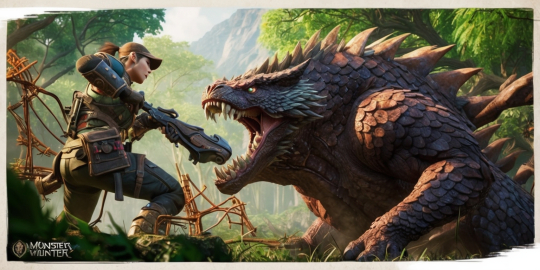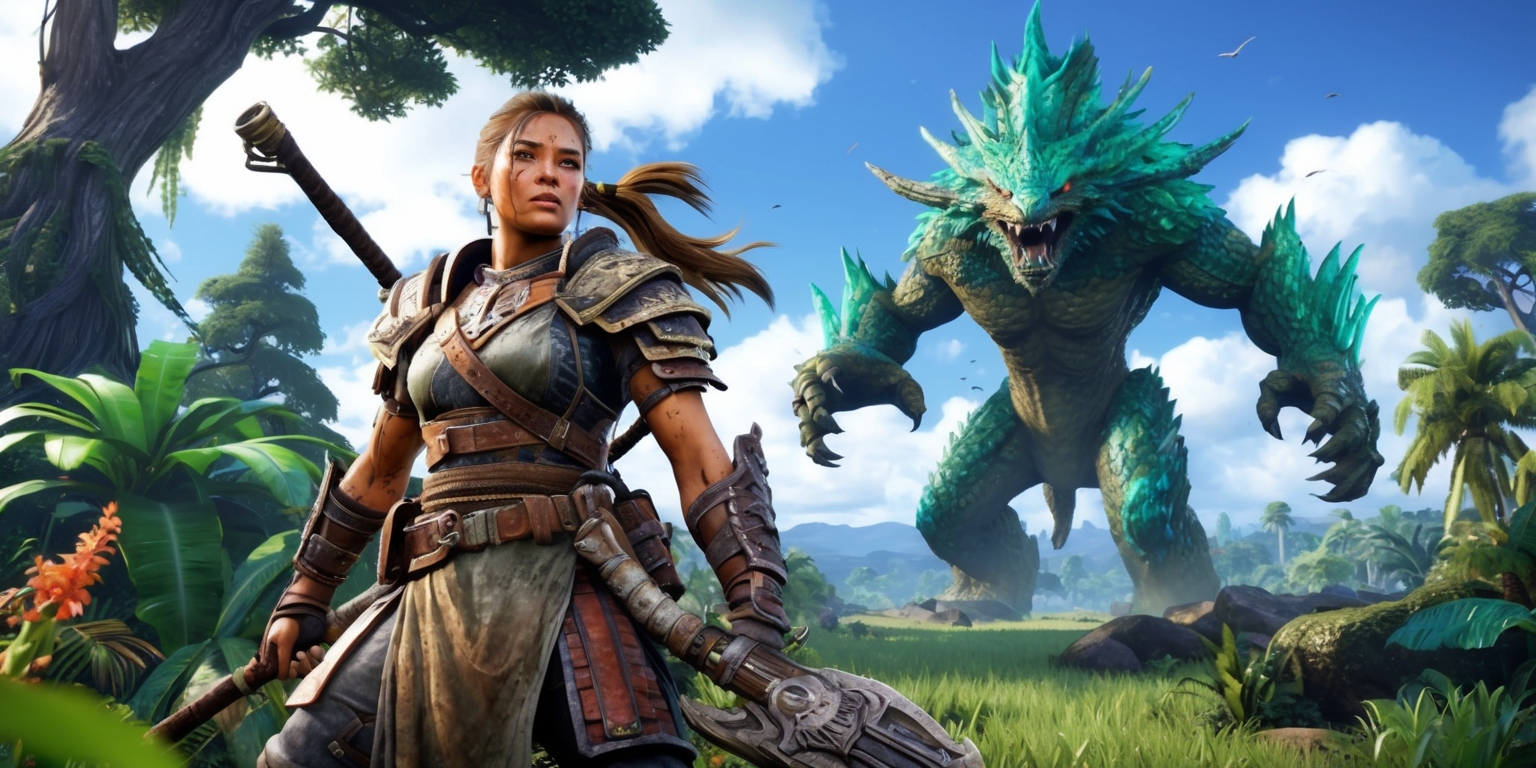
The world of Monster Hunter Wilds offers a vibrant blend of exploration and strategy, where gamers face not only fierce beasts but also the intricate demands of capturing them alive. This journey requires players to master the crafting of traps, the effective use of tranquilizing tools, and the art of maneuvering within challenging terrains. Rather than the traditional hunt-and-slaughter approach, certain missions demand a more refined tactic where incapacitating monsters becomes the priority. The game intricately mixes resource management, strategic planning, and an immersive environment to deliver a unique gameplay experience. With puzzles in trap assembly and timing that shifts the battlefield, every hunt unfolds as both a tactical trial and a test of one’s adaptability in an unpredictable wilderness.
Crafting the Essential Tools
In Monster Hunter Wilds, the crafting system plays a pivotal role in ensuring that every expedition is well-equipped for rather than simply overcoming monstrous foes. Essential to this process is securing the Trap Tool from a Provisioner NPC, an indispensable item that serves as the foundation for constructing a variety of traps crucial to live capture missions. Once in possession of the Trap Tool, players can return to their tent where a more refined crafting interface allows for the creation of specific devices such as the Pitfall Trap and the Shock Trap. For the Pitfall Trap, players will require additional items like Ivy and Spider Web to form a Net, highlighting the game’s emphasis on resource collection and management. This approach not only encourages a deep familiarity with the in-game ecosystem but also promotes a balance between offensive and tactical gameplay.
Strategic Trap Deployment
Once the necessary equipment is at hand, setting up traps requires careful timing and spatial awareness on the part of the player. Identifying the correct moment in battle becomes crucial when a notification alerts you that a monster is vulnerable enough to consider a capture device. The game’s mechanics ensure that players must weaken their opponent first, a process that involves careful observation of the creature’s behavior and health cues. After noticing the beast limping toward a quieter, more secluded spot, it becomes optimal to lay down a trap in its wake. This phase of gameplay demands a blend of patience and precision, as the player must lure the target straight into the trap without interference from external factors. The precise placement of the trap in relation to the beast’s movement patterns can determine the success of the capture mission.
Deploying Tranquilizing Solutions
The effective use of tranquilizing items is equally integral to Monster Hunter Wilds’ capture dynamics. Players need to prepare their inventory with multiple tranq devices, ensuring that when the target is ensnared, there is enough firepower to subdue the beast. The crafting of these devices involves combining natural substances found throughout the quest, such as Sleep Herb and Parashroom, to produce a Tranq Bomb. This process is designed to Infuses the game with an extra strategic dimension, ensuring that every capture mission "places equal emphasis on managing resources as it does on" real-time combat. In addition, the game allows for other forms of tranq instrumentation like Tranq Blades and Tranq Ammo, which necessitate a careful balance between immediate needs and long-term preparedness. This dual focus on both crafting and combat technique showcases the game’s multifaceted approach to monster encounters.
Understanding Unique Game Mechanics

Monster Hunter Wilds redefines how players interact with its environment through unique gameplay mechanics, especially when it comes to capturing versus neutralizing a target. Unlike the typical quest where the objective centers around eliminating a threat, certain missions require the beast to be rendered unconscious without completely depleting its health. This mechanic introduces a dual challenge: while the monster must be significantly weakened to avoid an overly prolonged struggle, it must yet remain alive long enough for essential capture procedures. Such requirements reposition the game from a simple action-adventure to a strategic simulation, demanding players constantly adapt their combat techniques. By blending direct confrontational tactics with indirect methods such as crafting and trap placement, Monster Hunter Wilds delivers a nuanced and layered experience where each move can alter the outcome of the encounter.
Inventory Management and Resource Allocation
Resource management in Monster Hunter Wilds is an intricate dance that adds depth to every expedition. The game forces players to be mindful of both their offensive tools and the items needed for non-lethal captures. Balancing essentials like Trap Tools, Ivy, Spider Web, and Thunderbug Capacitors calls for careful planning even before stepping into battle. The tent serves as a strategic hub where players can appropriately allocate their resources, crafting both traps and tranquilizers in readiness for potential confrontations. This methodical preparation is essential, as the wilderness is fraught with challenges that can quickly deplete a hunter’s supplies if not managed effectively. The element of inventory management creates an immersive An infusion of authentic detail that entices players to become even more immersed in… the world, making each decision a vital part of the overall survival strategy.
Embracing Environmental and Dynamic Cues
One of the most engaging features of Monster Hunter Wilds is the reliance on environmental cues during combat. The in-game notification system plays a significant role by alerting players to optimal moments for deploying traps and serene agents. Observing the behavioral changes in monsters—such as limping or seeking refuge in calmer areas—adds a dynamic element that transforms the wilderness into a living, breathing battlefield. This subtle yet powerful integration of nature and strategy means that players must always be attentive to their surroundings. By capitalizing on these cues, a hunter can adapt their approach in real time, seamlessly shifting from aggressive combat to tactical entrapment. The synergy between environmental awareness and strategic execution makes each hunt not Not merely an assessment of physical might but also an opportunity to demonstrate inner resolve test of observation and patience.
Handling AI Support with Precision
The role of AI companions in Monster Hunter Wilds introduces another layer of complexity during capture missions. While these digital allies can offer valuable assistance in overwhelming foes during standard engagements, they may inadvertently disrupt the delicate balance required for live captures by inflicting excess damage on a vulnerable target. To address this challenge, the game provides an option to dismiss AI partners, thus ensuring that the monster remains within the safe threshold for capture. Players can manage these adjustments easily by navigating the in-game menu and removing the companions from the active quest squad. This design choice empowers the player with greater control over the hunt, ensuring that every aspect of the mission—from trap placement to tranquilizer Deployment is carried out with meticulous precision and thoughtful care.
Distinct Trapping Modalities
A deeper look into the assorted trapping modalities reveals the game's commitment to versatility in approach. The Pitfall Trap and Shock Trap each cater to different combat scenarios and behaviors exhibited by monsters. The Pitfall Trap is crafted with a Trap Tool and a Net—created from Ivy and Spider Web—making it an ideal choice for scenarios where the target’s movements must be quickly intercepted. Conversely, the Shock Trap utilizes a Thunderbug Capacitor to deliver a jolt that momentarily disorients the creature. These contrasting mechanisms add an enriched layer of tactical variability, demanding that players analyze the monsters’ behaviors before deciding on the appropriate device. Such careful planning and adaptive techniques underscore the game’s broader emphasis on strategic improvisation and highlight the potential for varied gameplay experiences in different territorial contexts.
Adapting to Mission-Specific Objectives
The diverse mission structures in Monster Hunter Wilds require players to thoroughly adapt their strategies to align with specific objectives. Unlike many games that center around the general notion of submitting beasts, certain missions emphasize the importance of capturing the creature alive. This shift in objective calls for a more measured, less aggressive approach, where precise timing and fine control over resource distribution become paramount. Players must scrutinize each mission directive, as the rewards often extend beyond standard loot to include unique materials derived from the beast’s living state. Consequently, the game encourages hunters to develop a repertoire of methods tailored to both traditional slaying and the nuanced art of live capture. In so doing, Monster Hunter Wilds not only tests the player's combat skills but also their ability to craft intricate, mission-specific strategies.
Exploring the User Interface and Gameplay Flow
Navigation and user interface design in Monster Hunter Wilds are pivotal for maintaining situational awareness during complex encounters. The in-game HUD is designed to provide critical notifications, such as when a monster is within the threshold for capture. This blend of visual feedback with auditory cues ensures that players are always aware of the window of opportunity for trap deployment and tranquilizer use. The design is optimized to allow for effortless access to… essential items, with the item pouch prominently displaying both traps and tranq tools. Such design considerations help mitigate the potential confusion that may arise from juggling multiple roles during an encounter. By integrating clear indicators into the gameplay flow, the interface reinforces a player’s situational awareness and allows for a seamless transition between combat and tactical planning, ensuring a more fluid and responsive gaming experience.
Integrating Aesthetics with Gameplay Complexity
Monster Hunter Wilds captivates players not only with its challenging combat mechanics but also through its rich visual presentation and immersive soundscapes. The environments are meticulously designed, with varying flora and fauna "that enhance a pervasive feeling of authenticity". These artistic choices enhance the narrative of each hunt, where the interplay between light, shadow, and the natural environment can influence both the strategy and mood of the encounter. Every trap crafted and placed is matched by complementary design elements—highlighting organic textures and smooth animations—that make setting up for a capture feel both rewarding and aesthetically pleasing. This marriage of beauty and strategy enables players to appreciate the artistry behind each tactical maneuver, providing an encounter that equally delights the eyes and challenges the mind challenging.